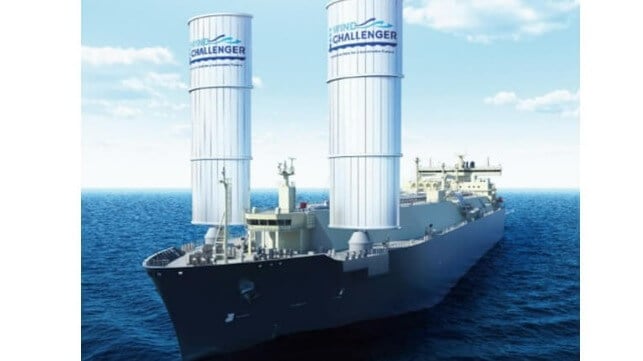First LNG Carrier to be Fitted with Wind Propulsion by MOL and Chevron

Wind-assisted propulsion which has been emerging on bulkers and tankers will be extended to LNG gas carriers under a new agreement between Mitsui O.S.K. Lines and Chevron Shipping Company. The companies report it will be added to an under-construction vessel and requires no significant changes to the standard LNG carrier.
MOL and Oshima Shipbuilding completed the development of a rigid sail made of a composite material of fiber-reinforced plastic. It was first introduced on a bulker in 2022 with MOL reporting plans to expand deployment to additional vessels. Currently, it is installed on two of the company’s bulkers, and in August 2024 MOL reported it had obtained design approval to incorporate the sail onto gas carriers.
Chevron has agreed to deploy the first gas carrier with the sail, which is being built by Hanwha Ocean for delivery in 2026. The vessel will be the standard size 174,000 cbm ship with a length of 938 feet (286 meters).
It will be fitted with two Wind Challenger sails. Each will have three sections that telescope to a maximum height of approximately 161 feet (49 meters). Each is about 49 feet (15 meters) wide.
According to MOL, the installation position of the Wind Challenger will minimize the impact on the existing design of the LNG carriers. It will enable the retention of the existing mooring arrangement. It will also have a limited impact on the vessel’s windage area.
After 18 months of operation on the first vessel, a 100,000-dwt bulker transporting coal, MOL reported it had reduced daily fuel consumption by up to 17 percent. On average the fuel saving has been between five and eight percent per voyage.
The company has reported plans to expand the first installations with seven new construction bulkers. In addition, in 2025, they are planning the first retrofit of the Wind Challenger to an in-service bulker. The group plans to launch 25 vessels equipped with the Wind Challenger by 2030, increasing to 80 by 2035.
